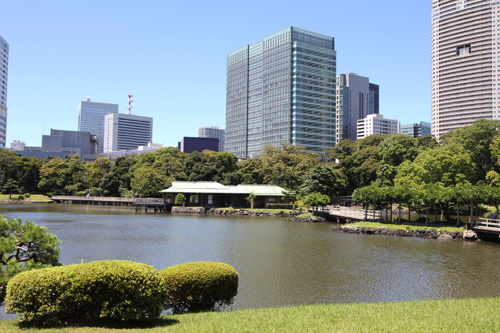Garden Elements
- Published 2015.7.28

Miniaturization: The miniature and idealized view of nature was one of the strongest principles in Japanese gardens at the time. Rocks placed in gardens can represent mountains and ponds could resemble the oceans. Gardens appeared larger by using the foreground and background by placing larger rocks and trees in foreground while placing smaller in back.
Concealment: Concealment was called Miegakure (Ķ”ŗŃüłķÜĀŃéī). It differed greatly from Zen Buddhist gardens which were designed to be seen all at once. Promenade gardens used concealment because gardens were meant to be seen one landscape at a time like a scroll of painted landscapes unrolling. Features were hidden behind hills, tree groves, and bamboo groves, walls or structures only to be discovered when visitors followed winding path.
"Borrowed" Scenery: This principle was called Shakkei (ÕƤµÖ») and was commonly used for smaller gardens that were designed to incorporate the view of features outside of the garden. Hills, trees, and temples can be used as a backdrop to make the garden look larger than it really is. Modern gardens can also use buildings and city skyline as background for garden.
Asymmetry: Gardens that incorporated the principle of asymmetry were not laid on straight axes with single feature dominating view. The buildings and features were placed and meant to be seen diagonally. This principle also used carefully composed scenes contrasting right angles from buildings with natural features and vertical features. Rocks, bamboo, and trees were seen as vertical while water was horizontal.
